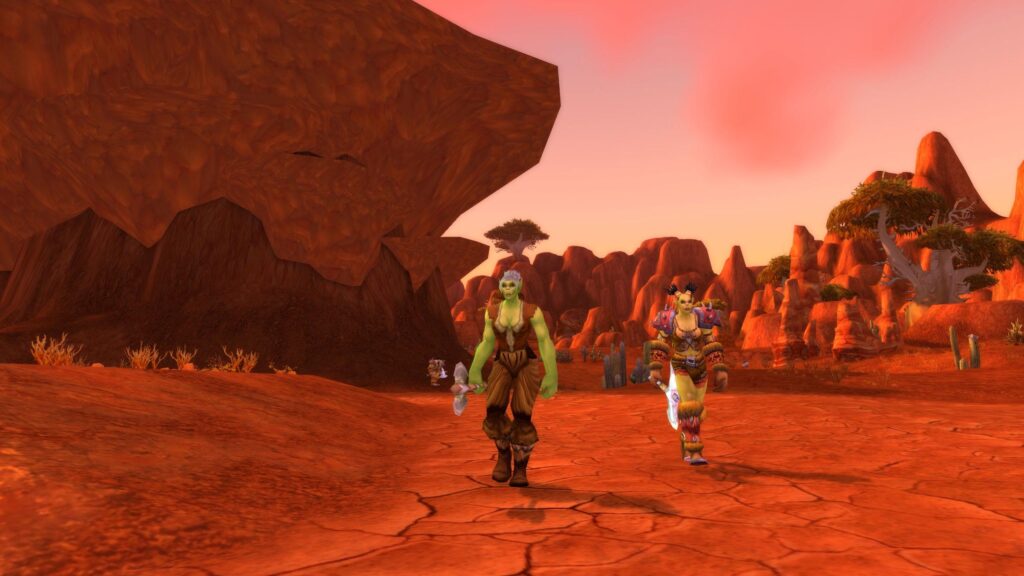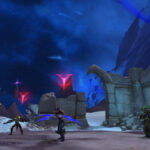Since its release in 2004, World of Warcraft has seen over 100 million accounts created, with countless players dedicating hours to perfecting their class gameplay. You’ve been part of this ever-changing world, adapting to each new challenge and skill overhaul. Remember the days when talent trees were vast forests of possibilities, and now, how they’ve morphed into streamlined paths that guide your character’s growth? As you’ve evolved from a novice adventurer to a seasoned champion, so too have your abilities and roles within the world of Azeroth. This transformation hasn’t just altered the way you play; it’s redefined the very identity of what it means to be a Warlock, a Paladin, or any of the diverse classes available. Stick around and you’ll uncover the pivotal moments that have not only influenced your in-game decisions but have also had a profound impact on the community and the game’s enduring legacy.
Vanilla WoW Class Overview
How did the original classes in Vanilla World of Warcraft define the early gaming experience for players? Each class offered a unique way to explore the sprawling world of Azeroth. Whether you pledged your allegiance to the noble Alliance or the fierce Horde, you were thrust into an epic conflict that was set in motion by the events of Warcraft III. The capital cities were hubs of activity where warriors and mages alike would gather before setting out on quests to places as mystical as Mount Hyjal.

As a shadow priest, you’d wield the ambiguous nature of your holy power, delving into the darker arts to both heal allies and devastate foes. If you were a paladin, you’d champion the cause of your faction, with Kul Tiras sailors perhaps whispering tales of your valor. The choices you made in those early days—from the faction you joined to the talents you selected—shaped your journey through the world of Warcraft, imbuing it with a sense of personal investment and immersion that you’ve likely carried with you through expansions and years of gameplay. Vanilla WoW wasn’t just about the destinations—it was about the roles you chose and how they carved your path through Azeroth’s history.
Burning Crusade Expansions
As you stepped through the Dark Portal in the Burning Crusade expansion, World of Warcraft’s classes underwent significant evolutions, introducing new abilities, talents, and two additional races that expanded the possibilities for your hero’s journey. Blizzard Entertainment crafted a rich expansion where the once familiar landscapes of Azeroth gave way to the alien terrains of Outland, and with them came fresh challenges and class mechanics that demanded your attention.
You weren’t just battling the Iron Horde or bracing for the chilling winds of Icecrown Citadel yet; those were adventures still on the horizon. Instead, you found yourself amidst a struggle against Illidan Stormrage and the demonic legions pouring from the Dark Portal. Each class received a meticulous overhaul. Paladins and Shamans, previously faction-exclusive, became available to both factions, disrupting the status quo and encouraging new strategies.

Your toolkit expanded with the level cap increase to 70. You were mastering the art of crowd control with a Mage’s new Spellsteal ability, or diving into the fray as a Warrior with the spell reflection technique. Every encounter, every quest, seemed designed to make you rethink and adapt your playstyle, ensuring that your adventure in the Burning Crusade remained as dynamic as Azeroth itself.
Wrath and Cataclysm Changes
Building on the momentum of the Burning Crusade, World of Warcraft’s Wrath of the Lich King and Cataclysm expansions further revolutionized class gameplay with sweeping changes and new systems. Wrath introduced the Death Knight, WoW’s first hero class, starting at level 55 and showcasing a unique playstyle with Runes and Runic Power. You saw the dual spec feature, allowing you to switch between two talent builds, a game-changer for flexibility in your adventures.
Cataclysm shook things up with the massive overhaul of the talent system. You weren’t pigeonholed into a single tree anymore; instead, you chose a primary tree granting a defining ability and could mix and match talents from others. This gave you more control over your character’s specialization, tailoring your playstyle to suit your preferences. The new system also introduced Mastery, a stat boosting core aspects of your chosen specialization, further fine-tuning your class’ performance.
These changes, coupled with countless balance adjustments, ensured that your experience in Azeroth remained fresh and engaging. You had the opportunity to delve deeper into your class’ lore and mechanics, forging a more personal connection with your chosen avatar. Whether raiding or roaming the open world, you felt the impact of these evolutions with every quest completed and every foe vanquished.
Mists to Legion Adjustments
Every expansion from Mists of Pandaria to Legion brought its own set of class changes, further refining your gameplay experience in World of Warcraft. In Mists of Pandaria, you saw the introduction of the Monk class, along with a complete overhaul of the talent system which shifted from a tree-based structure to a more streamlined tier-based selection of abilities. This allowed you to tailor your character’s abilities more precisely to your preferred playstyle.

Warlords of Draenor focused on pruning abilities, aiming to simplify rotations and reduce ability bloat. It wasn’t just about taking away though; some classes received new talents and abilities to fill in the gaps.
Legion introduced the concept of class-specific Order Halls and Artifacts, each with their own unique questlines and abilities. These changes brought a deeper sense of identity and immersion to your class.
Here’s a quick recap of the major adjustments:
- Introduction of the Monk class and a revamped talent system in Mists of Pandaria.
- Ability pruning and the addition of new talents in Warlords of Draenor.
- Class-specific Order Halls and Artifact weapons that added new dimensions to class identity in Legion.
These iterations kept the game fresh, ensuring that you always had something new to learn and master with your favorite classes.
Battle and Shadowlands Overhauls
Continuing with the evolution of World of Warcraft classes, the Battle for Azeroth expansion further refined your experience with a focus on Azerite traits and the Heart of Azeroth. This system replaced the Artifact weapons from Legion, and you found yourself gathering Azerite to empower your Heart of Azeroth, which in turn unlocked various traits on your gear. This new mechanic aimed to give you more control over your character’s abilities and playstyle.

As you delved into the Heart of Azeroth system, you realized that certain Azerite traits were more impactful than others, leading to some clear ‘best choices’. This often resulted in a gameplay loop centered around optimizing gear for the most powerful traits, which could sometimes feel limiting rather than liberating.
Then came Shadowlands, which brought another round of class overhauls. The expansion introduced Covenants, each with unique abilities that further defined your playstyle. You also encountered the return of class-specific abilities that had been pruned in previous expansions, giving you back some of the flavor and distinction that may have felt lost over time.
Torghast, Tower of the Damned, a roguelike experience, offered you new ways to tackle challenges and test your class capabilities. With these changes, Shadowlands aimed to blend the old with the new, hoping to strike a balance that would keep your class experience fresh and engaging.
Frequently Asked Questions
How Has the Role of Hybrid Classes Changed Throughout the Expansions, and What Impact Has That Had on Raid and Dungeon Group Compositions?
You’ve noticed hybrid classes now juggle roles more fluidly, impacting raid dynamics by offering flexibility. This versatility has made group compositions less rigid, allowing for a wider range of strategic approaches in dungeons and raids.
Can You Provide Examples of Classes That Were Once Considered Underpowered or Niche That Have Risen to Prominence in Later Expansions?
Haven’t you seen the rise of the underdogs? Once underpowered, the Death Knight and Warlock classes have become powerhouses, dominating raids and PvP with their revamped abilities and roles in recent expansions.
How Have Player Preferences and Popularity for Certain Classes Shifted With Each Expansion, and What Factors Contribute to These Trends?
You’ve seen classes wax and wane in popularity with each expansion, influenced by balance changes, the evolving meta, and new content that favors certain class mechanics or roles over others.
What Specific Class-Related Features or Mechanics Were Removed From the Game, and How Has Their Absence Affected Class Identity and Gameplay?
You’ve noticed your favorite spells vanishing faster than your will to grind rep, right? The axing of class features really flipped gameplay on its head, making your class feel a bit less ‘special.’
How Has the Introduction of New Races and Their Associated Racial Abilities Impacted the Balance and Choice of Classes Among the Player Base?
New races and their abilities have likely swayed your class choices, creating a more dynamic balance and influencing which classes you might play based on the racial perks available to you.
Look at our blog!







Leave a Reply